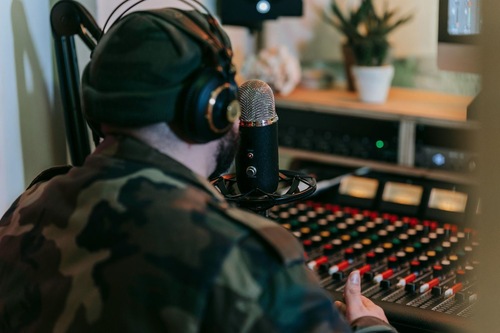Creating music used to be an elite art. You needed gear, training, hours of composition time, and usually a collaborator or two. But creativity doesn’t want to wait for permission or resources anymore. It wants speed, freedom, and experimentation—and AI is meeting that call in the most unexpected way.
Imagine describing a vibe with just a few words—”melancholic sunset,” “futuristic chase scene,” or “cozy coffee shop.” Now imagine getting a fully produced track that matches that exact mood. You didn’t hum a tune. You didn’t press a key. You just described it. That’s not a fantasy anymore.
Using a free AI music generator from text, creators can turn plain language into layered, dynamic audio. No plugins. No software mastery. Just input, and output. What once required a team of musicians and hours in a studio now happens in minutes. The barrier to entry is practically gone.
This is changing the pace at which creators operate. Think of YouTubers, indie filmmakers, podcasters—they often scramble to find royalty-free music that fits their storylines. Licensing issues, mismatched tone, or just plain boring tracks can derail the whole vibe. AI-generated music solves that by creating tailor-made sounds in real time.
And it’s not just about practicality. There’s creative thrill in the randomness. One set of words might generate a funky bassline you never expected. Another might build a choral rise that hits just right. The unpredictability becomes part of the process. It’s like collaborating with a muse who doesn’t sleep.
This approach also rewires how people think about musical creation. You no longer need to play an instrument to have a musical voice. You don’t need a background in theory. You just need imagination and the willingness to try. The result is empowerment—especially for those who were never allowed to call themselves “musicians” before.
Speed doesn’t mean superficiality, either. Many AI tools now offer options to refine, rearrange, and remix the generated track. You get the first draft fast, and then mold it to match your specific tone. It’s like having a personal composer who works in real time and doesn’t complain about deadlines.
The biggest winners here might be small creators with big visions. Student filmmakers. Indie game developers. Freelance designers putting together showreels. These tools let them infuse emotion and rhythm into their work—without the overhead.
There’s also something futuristic and oddly poetic about feeding words into a machine and hearing them come back as melody. It’s a dialogue between human intent and machine interpretation. And sometimes, that conversation reveals something deeper than you expected.
Brands and agencies are also catching on. Music that is brand-specific or campaign-specific can be created on the fly, giving marketing teams more flexibility and originality. In a world where sound is as valuable as visual, that matters.
And let’s not forget the learning aspect. Educators, students, and content creators now have these abilities to produce music that enhances lessons, presentations, and narrations. It is not just not consumption anymore—now it is creation.
And the accessibility keeps growing. These generators are often browser-based, requiring no downloads or specialized tech. That means people in remote locations, with limited devices or slow connections, can still compose and experiment. Creative inclusion is no longer a buzzword—it’s a built-in feature.
Whether you’re building a personal project or launching a brand, music can set the emotional tone in seconds. And now, the process of creating that music is just as fast. What matters is the story you’re trying to tell—and how it sounds when it finally comes to life.
We’re in an era where words don’t just inspire lyrics—they *become* the entire song. And in that shift, a whole new kind of artist is born. One who speaks in prompts, listens in beats, and creates without limits.



